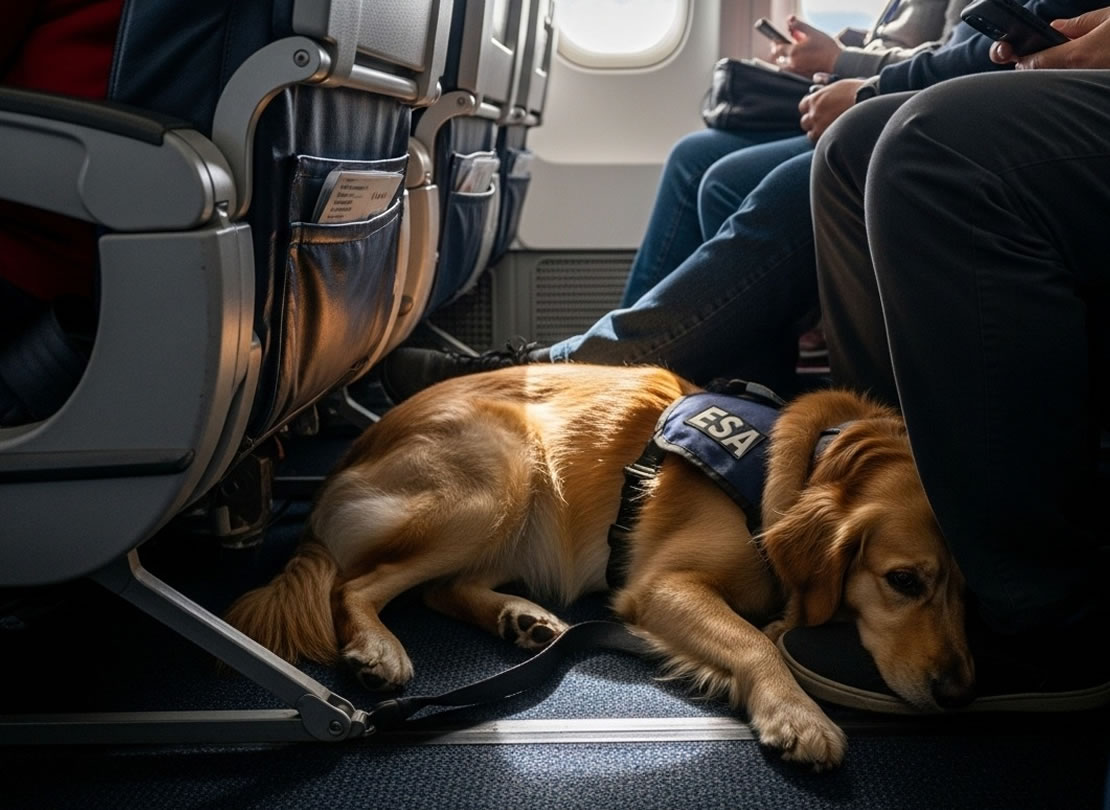Emotional Support Animals No Longer Allowed by Airlines: What You Need to Know
Emotional Support Animals (ESAs) have long provided comfort to travelers with emotional or psychological needs. However, recent airline policy changes mean ESAs are no longer accepted on most flights. In this article, we’ll explore why these changes happened, what it means for pet owners, and what options are still available.
What Are Emotional Support Animals?
Emotional Support Animals (ESAs) are companion animals that provide therapeutic benefits to individuals with diagnosed emotional, psychological, or mental health conditions. Unlike service animals, which are specially trained to perform tasks for a disability, ESAs do not require specialized training. Their primary role is to offer comfort, reduce anxiety, and improve emotional well-being.
Common ESAs include dogs and cats, but other animals—such as rabbits, guinea pigs, and even miniature horses—have been used in the past. To qualify as an ESA, an individual typically must have a recommendation letter from a licensed mental health professional confirming the need for the animal as part of a treatment plan.
Why Have Airlines Changed Their Policies?
Airlines allowed ESAs in the cabin for years without the fees normally charged for pets. However, the surge in ESA travel led to challenges:
- In-flight incidents: Untrained animals sometimes barked, growled, or caused messes.
- Passenger comfort and safety: Allergies or fear of animals created conflicts.
- Fraudulent ESA claims: Some passengers registered pets as ESAs to avoid fees, creating overcrowding issues.
In response, the U.S. Department of Transportation (DOT) updated its rules in late 2020, allowing airlines to treat ESAs as regular pets rather than service animals. Airlines have tightened their policies to comply with these regulations.
Important: Airlines are no longer required to recognize ESAs as service animals. Most major U.S. carriers have eliminated ESA programs. For official airline guidance, see FAA Travel Tips.
What Does This Mean for ESA Owners?
These changes can be challenging for travelers who rely on ESAs. Many individuals with anxiety, PTSD, or depression depended on their ESA for comfort during flights. Losing this option can be distressing, but there are ways to travel safely:
- Service animals are still allowed: Animals trained to perform tasks for a disability are recognized as service animals. For more info, see ADA Service Animal Guidelines.
- Pets can still fly: ESAs may travel as regular pets with fees and in approved carriers, either in-cabin or as checked cargo. Check airline-specific pet policies.
- Alternative travel options: Road trips, trains, and ferries may allow your ESA to stay close.
How to Prepare for Pet Travel Under New Rules
Planning ahead ensures a smoother journey with your pet, even under new ESA restrictions:
- Check airline policies: Each airline has specific pet rules. Review them before booking.
- Book early: Airlines limit cabin pets; reserve your pet’s spot in advance.
- Visit your veterinarian: Ensure your pet is healthy, up-to-date on vaccinations, and has the required health certificates. For official forms, see USDA APHIS Pet Travel.
- Choose the right carrier: Make sure your carrier meets airline specifications.
- Acclimate your pet: Get your pet comfortable in their carrier before traveling.
International Travel Considerations
International ESA travel is more complex. Countries may require quarantine, microchips, rabies titers, or deny certain breeds. Without proper planning, you risk delays or denied entry:
- European Union: Requires an EU pet passport or health certificate depending on the origin country. See EU Pet Travel.
- Australia & New Zealand: Strict rabies and quarantine protocols apply. See Australian Pet Travel.
- USA: CDC requires dogs from high-risk rabies countries to have advance approval. More info at CDC Pet Importation.
Need help with paperwork? Check out our Pet Documentation Services.
Balancing Rights, Safety, and Comfort
The ESA debate highlights the challenge of balancing individual rights with passenger safety and comfort. While ESAs provide genuine relief to many, some abuses of the system led to overcrowding and complaints. New rules aim to protect all travelers while still recognizing service animals.
ESA owners may need to consider alternative travel strategies, including training a service animal or using other forms of transport. With careful planning, safe and stress-free travel remains possible.
Conclusion
Airlines no longer recognize ESAs in the cabin free of charge, but options remain. Plan ahead, check airline rules, explore service animal eligibility, or consider alternate transportation. Our Pet Travel Experts can guide you through every step of your pet’s journey.


